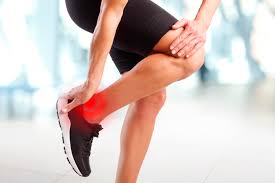Most popular achilles tendon injury
2017-08-19
 Achilles tendon is the strongest and largest tendon in the human body. Can withstand transverse shear forces of 500 kg, but is frequently damaged tendon structure.
Achilles tendon is the strongest and largest tendon in the human body. Can withstand transverse shear forces of 500 kg, but is frequently damaged tendon structure.Uncomfortable Achilles tendon pain
Achilles tendon connects the back muscles of the shin with the heel of the heel bone. During the race, it must withstand repeated loads of up to 10 times the body weight. As for its remarkable endurance, it is also the most frequently damaged tendon structure.Its size and unique design are particularly prone to both acute (sudden) and chronic (acute) injuries. Acute injuries usually involve total or partial tendon abruption. Chronic inflammation of the tendon, degeneration, and inflammation of the pseudopoietic system that causes the tendon to contract. Tendonitis is an overload. The most common types are middle-aged men who engage in activities that require high physical activity, especially cross-country activities. Achilles tendon bursitis, also known as a cushioning cushion against the heel tumor, may also be inflamed. Such trauma gives you similar symptoms as Haglund's disease.
The primary causes of Achilles tendon damage are stroke loads (ischemia), particularly exacerbated by physical activity accompanying the jumps and jumps. Immediately affected by these training errors, but also defective vocative foot setting, poorly selected shoes (lack of stabilization of the throttle) and excessive muscle tension in the back of the calf (calf). Degenerative and traumatic events within the course of the Achilles tendon occur especially in the range of 2 cm to 6 cm from the heel to heel. This place was described as an area of relative lack of blood supply.
Many experts find problems within the Achilles tendon beyond the attachment in "functional overdose". Imagine a person with a flat foot in which the foot is flattened while running, and when heels come in contact with the ground he enters the pronation (the heel runs out). Within the Achilles tendon, there is a high turnover, which in turn causes the blood to be squeezed into the tendon. This leads first to inflammation and then to degeneration. So before you start running, it is important to examine your feet functionally, which will protect you from the nasty consequences of the Achilles tendon.
More and more popular Achilles tendon rupture
The most common acute tendon abruption occurs in middle-aged people. This happens when the tendon is overloaded when the toes are raised. They can be seen with chronic degeneration but also with people who have foot problems. Partial tendon rupture is most common among well trained athletes. Most often, intercostal or tendon rupture occurs in the zone of the lowest blood supply (2-6 cm from the heel to heel).There is also Haglund's disease. It is described as a growth located in the posterior upper part of the heel tumor. It can also lead to irritation of the Achilles tendon. Bursa undergoes inflammatory changes as a rule by squeezing the structure of the wrong footwear. Haglund's deformity pain is located in the upper-posterior part of the calcaneus.
What is Achilles tendinitis?
Achilles tendinitis is very dangerous. To cure it first we have to rest. Any physical activity that aggravates tendon tenderness gradually aggravates microdermabrasions and consequently leads to massive damage in the form of rupture. If we are too eager to stop running, try to jog or swim in the deeper part of the flotation pool without hitting the bottom with your heels. Water will strain our limbs and we will not deepen the tendon pathology. If running is fun for us and we can do without it - stop activities that provoke pain and start strengthening in strength training.Shop Now ☛ Achilles tendon brace
Show more entries from
August 2017


